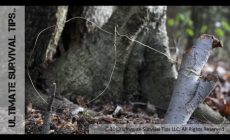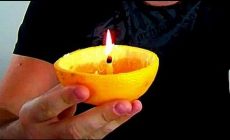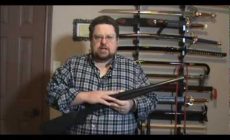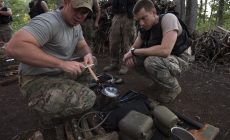The training relationship with your hunting dog is ever-changing. Training begins the moment you and your pup lock eyes, and it doesn’t end until you put away your gun for good.
To train a reliable hunting dog, you need to put in the time and effort. Working consistently with your gundog in the first 16 months will give you years of satisfaction because you’re not just shaping a hunting companion but also a companion for life. Decide what type of hunting dog is best for you, and then begin training immediately.
When you set out to train a hunting dog, you want your pet to stop, stay, go away from you and come back to you when you give it the correct verbal commands. However, frequent distractions in the field mean that teaching your dog is a continual process.
However, all the hard work and hours that you spend with your hunting dog will only strengthen the bond between you and increase the channels of communication. To help maximize your time together, here are seven tips for successfully training your pup.
1. Socialize Your Puppy
Make sure your pup is around lots of people, other dogs and animals and in a variety of locales when it’s young. You want it to get used to the hustle-and-bustle of things so that, years later, it can sit undisturbed until you tell it to move.
Start training early, as hard work during the puppy years lays the foundation for learning more challenging skills later on. Teach your puppy its name, the word “no,” and housebreak it. You can introduce your puppy to the collar and lead, but avoid any strict instructions with them yet. Praising your pup will work considerably better than punishments at this point.
2. Incorporate Crate Training
The sooner you introduce your pup to its crate, the better. Many people see dog crates as cages, but hunters transport multiple dogs to many different locales. If you want your pup to be a capable hunting dog, it has to feel calm in its crate.
Once grown, your dog will spend a lot of time in that crate, heading into the wild. If you only use the container to transport your pup to the vet in the beginning years, it will create a negative association.
Instead, take short trips to places your pet likes, such as the dog park, trails, or the local swimming hole. It will soon learn to associate the crate with travel, instead of vet visits.
3. Make Time for Outdoor Exercise
While a puppy is young, its growth plates won’t have fully developed, so vigorous exercise isn’t necessary. However, puppies definitely love to run and play, so give it ample opportunity to romp and run. Take your pup to the countryside specifically to get used to being in open fields or close thickets.
Let your puppy playfully explore, scenting or flushing a bird. This type of unstructured play will build the dog’s confidence, contribute to its growing bulk and strength and hone its instincts. Introducing your pup to water, especially if you enjoy hunting waterfowl, will reap the rewards later on.
Keep track of your pup so he doesn’t get lost during these trips. A check cord and locator collar are in the pup’s near future.
4. Start with Simple Commands

Training should start with the word “no,” understanding names, and responding to the collar and leash. Once your puppy is six months old, you can add the word “hup” when it sits on command, laying the groundwork for sit-to-flush.
Introduce pointer pups to the word “whoa” soon as they will need to stop and hold on command until released. This command is considered essential to hunting dog training.
Learning “blind manners”–how to sit quietly in a blind for hours while hunters call ducks–is an invaluable trait later on, as is training your dog to mark any flying fowl or watching where they fall.
5. Introduce the First Bird
Introduce your pup to its first bird with a dead pigeon. Luckily, it won’t flop around and squawk, which could potentially scare the young puppy.
Let your dog hold the bird in its mouth, but if you see signs that it is biting or starts to shake the bird, correct your dog to avoid rough handling of fowl down the line. You need to be especially vigilant that your pup isn’t too mouthy with the training birds.
If you can keep up and you’ve got your pup secure on a check cord, follow him into the scent-cone of some live birds to hone his prey drive.
Introducing your dog to the sound of gunshot early on is also vital. Most dogs become anxious around sudden, loud noises. Hunting dogs need to be aware of guns, but not bothered by the noise of firearms, which takes practice. For the best results, give your puppy plenty of time to build a tolerance to the sound.
You may also need to allow time for your pup to acclimatize to your hunting gear, as many types of hunting clothes use scent-masking technology, which can confuse your pup.
6. Shop for Quality Training Gear
Use the same care with which you pick out your performance hunting clothes to pick out your puppy’s training gear.
You will need to invest in check cords, locator collars, whistles, and training wings to shape your hunting companion, along with an acceptably sized crate and dog beds and jackets to keep your pet warm in the container.
Check cords can help you train your field dog the zigzag pattern that will be so useful on future hunts. Training wings hone your dog’s instincts, and for pointers, lets your dog discover its stance.
7. Design Detailed Training Plans
Sometimes rewarding, sometimes exhausting, training your pup to be a worthy hunting companion takes time and persistence.
Whenever you take a short trip if your dog is gun-ready, make a detailed plan. Note when your pup succeeds and fails in the field. When you’re back at home, review your observations and make adjustments to your training schedules.
If you find yourself becoming increasingly frustrated, there are dog trainers to help you develop an effective training plan for you and your pup. Dog training is hard work, but if it becomes overly stressful, seek professional help.
Final Thoughts
Practical training may be time-consuming, but it will pay off in the end. Progress may be slow while teaching a puppy the basics, but the foundation is being built for an excellent hunting companion.























Leave a Reply
Your email address will not be published. Required fields are marked (required)